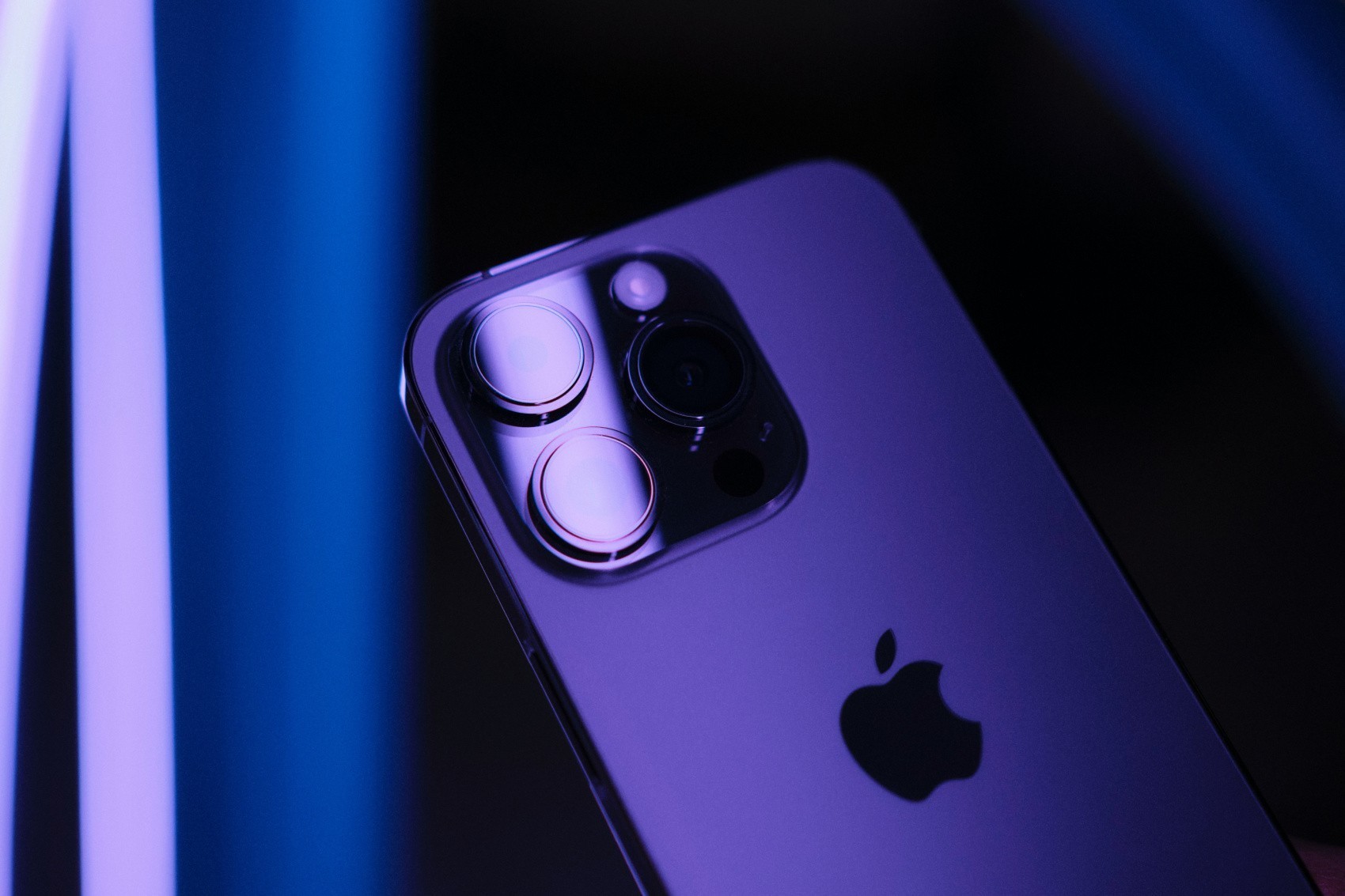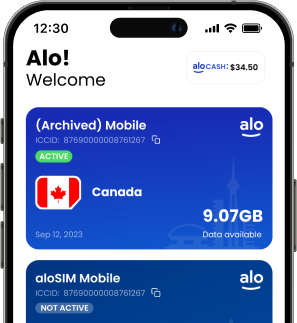In recent years, eSIM technology has completely taken over, revolutionizing the way we travel, connect to mobile networks, and more. But what exactly is an eSIM? How does it differ from a traditional SIM card? Better yet, is your iPhone eSIM compatible? So many questions! Here’s what you need to know.
iPhone models that support eSIM:
• iPhone XR
• iPhone XS, iPhone XS Max
• iPhone SE (selected)
• iPhone 11, iPhone 11 Pro, iPhone 11 Pro Max
• iPhone 12, iPhone 12 Mini, iPhone 12 Pro, iPhone 12 Pro Max
• iPhone 13, iPhone 13 Mini, iPhone 13 Pro, iPhone 13 Pro Max
• iPhone 14, iPhone 14 Plus, iPhone 14 Pro, iPhone 14 Pro Max
• iPhone 15, iPhone 15 Plus, iPhone 15 Pro, iPhone 15 Pro Max
• iPhone 16, iPhone 16 Plus, iPhone 16 Pro, iPhone 16 Pro Max
Everyone’s talking about eSIM with the launch of sleek new iPhone lineup, but chances are your current iPhone already supports eSIM … and you might not have even realized!
eSIM has been an option on most iPhones ever since the iPhone XR was released in September of 2018, but not everyone has been taking advantage of this handy feature that can eliminate roaming charges when you travel.
From which iPhones have eSIM, how eSIM works, and how you can get eSIM set up on your device right away, today we’re going to walk you through all things eSIM and iPhone …
What is eSIM, anyway?
So you’ve probably heard of a SIM card — that little sliver of plastic that slides inside phones and tablets. They come in different sizes, but they all do the same thing: connect a device to a network. When you switch phone providers, you stroll into a store and they swap your old SIM card for one of their SIM cards so you can connect to their network instead.
An eSIM is a digital SIM card — doing the same job as a traditional plastic SIM card, except you can’t lose it, drop it, break it, or otherwise damage it. Instead of a single clunky SIM card, you can store up to eight eSIMs on your iPhone at once. And because they’re digital, you can buy new eSIMs online whenever you want, and instantly connect to networks all over the world.
Why do people want eSIM on their iPhones?
Whether you’re an avid traveler or more of a homebody, there are so many benefits to using eSIM on your iPhone.
iPhone eSIMs can be purchased anytime, anywhere.
With eSIM apps like aloSIM, you can add data to a device while lounging on the couch, waiting at an airport baggage carousel, or walking down a city street. No need to visit a store or buy anything from a kiosk. All it takes it a few taps on your screen, and you’ve got exactly what you need.
iPhone eSIMs keep you connected around the world.
With eSIM data packages available for 120+ countries and regions, we know a thing or two about keeping people connected on their iPhones and iPads. Sure, your hotel will likely have free Wi-Fi. But what happens when you leave the property to do some sightseeing? You’re likely going to want data for maps, browsing, social media, email, calling, and texting … and we can make that happen, instantly.
iPhone eSIMs prevent roaming charges when you travel.
Most of us have been stung at least once by roaming charges on our mobile bill after a vacation. Roaming charges are when your home carrier makes you pay for letting your phone “roam” outside of your usual coverage area, trying to find a network connection. Roaming charges can be very expensive, so we always recommend people go into their iPhone settings and turn off Data Roaming for their Primary SIM, and roam with a local eSIM instead.
iPhone eSIM data packages are flexible.
We don’t like that carrier travel data plans often force people to pay a flat daily rate for connectivity abroad, no matter how much data the person users. (We compare that to paying a steep daily rental fee for a picnic basket, even if you barely nibble on a cracker most days.) Here at aloSIM, we believe in flexibility. Our customers can buy data packages as small as 1 GB, if all they want is enough to tide them over in spots without Wi-Fi.
iPhone eSIMs let you use your regular phone number.
Some travelers used to pluck out their real SIM card and replace it with a local SIM card to connect to networks on vacation, but that meant they were also removing all access to their phone number. No calls. No texts. But when you use an eSIM for data on your iPhone, you can keep your Primary SIM “on” at the same time, and continue to send/receive texts and make/accept phone calls on your regular phone number.
iPhone eSIMs are prepaid, with no contracts.
The price you see is the price you pay! With eSIM data, you’re paying a one-time fee for a certain amount of data. (For example, you might pay $5 for a week’s worth of eSIM data in order to use your iPhone for a vacation in New York.) If you use up that $5 worth of data and decide you want more, you can easily buy another $5 to keep you connected for the rest of your trip.
Which iPhones have eSIM?
Now that you know all about the reasons to take advantage of eSIM on your iPhones, let’s look at which iPhones have eSIM built-in, and how you can add eSIM data plans to them immediately …
iPhone XR
When it comes to eSIM and iPhones, the iPhone XR is the OG! It’s one of the earliest iPhone models that supports eSIM, and we love this little guy for hanging in there and holding its own, even as many other iPhones have come after it.
If you’ve upgraded your phone in recent years, you might even have an old iPhone XR kicking around the house. Remember that even though it’s “old,” it can still install and activate eSIM data packages.
That means it doesn’t need a service plan or phone number to be able to be used for calling and texting. You can purchase a short-term eSIM data package (possibly for as little as $4.50, depending on your location), and instantly give your iPhone XR data for a week (or longer). So if you have an iPhone XR (and it wasn’t purchased in Mainland China, Hong Kong, or Macao), hang onto it.
Add eSIM data to your iPhone XR by shopping for a data package, installing the eSIM on your iPhone XR, and activating it when you’re ready to start using your new data.
iPhone XS | iPhone XS Max
Hands up if you own (or owned) an iPhone XS or iPhone XS Max? Did you have it in silver, space gray, or gold? These models aren’t sold anymore, but they were one of the earliest iPhone models with embedded SIM cards (eSIMs), and they were also designed to be pretty water resistant. (Apple actually tested them with pool water, salt water, tea, wine, beer, and different types of juice.)
As long as you have an iPhone XS Max that wasn’t purchased in Mainland China, Hong Kong, or Macao — or an iPhone XS that wasn’t purchased in Mainland China — these phones still work nicely for purchasing eSIM data packages.
Keep it handy for traveling abroad, because iPhones make it easy to add eSIM plans in countries all over the world, giving your phone local data for low prices.
Add eSIM data to your iPhone XS or iPhone XS Max by shopping for a data package, installing the eSIM, and activating it when you’re ready to start using your new data.
iPhone 11 | iPhone 11 Pro | iPhone 11 Pro Max
Remember how it blew everyone’s minds when the iPhone 11 Pro and iPhone 11 Pro Max were released with three cameras? THREE CAMERAS?! Woah.
Just like the other iPhones we’re rounding up here, the iPhone 11s all support eSIM — which means they have built-in SIM cards (better known as eSIMs) that you can use to connect to networks all over the world, accessing mobile data whenever you need it.
Oh, and all iPhone 11s support eSIM, unless the device was purchased in Mainland China, Hong Kong, or Macao.
Add eSIM data to your iPhone 11 by shopping for a data package, installing the eSIM, and activating it when you’re ready to start using your new data.
iPhone SE
Now, if you have an iPhone SE, this is where things get a bit more complicated. Only certain models of the iPhone SE support eSIM, and it might take you a second to figure out if yours does or not.
If you happen to be a very techie person who knows exactly which generation of phone you’ve purchased, then … wow! Good for you. (We certainly don’t know those things.) Then we can proudly share that you’re in luck if you’ve got a second-generation iPhone SE or third-generation iPhone SE.
And if you have no idea which generation your phone is (we feel that), there’s a much easier way to know if your iPhone SE supports eSIM. You can follow our instructions to check the model number in your phone’s “About” section, and then we’ll tell if you if it’s an eSIM-compatible second-generation or third-generation iPhone SE, or a first-generation device that isn’t going to work with eSIM. (Fingers crossed for you!)
Add eSIM data to a compatible iPhone SE by shopping for a data package, installing the eSIM, and activating your iPhone eSIM when you’re ready to start using your new data.
iPhone 12 | iPhone 12 Mini | iPhone 12 Pro | iPhone 12 Pro Max
Ah, the iPhone 12s. Remember when the iPhone 12 Mini was released? So itty-bitty and adorable!
Apple released the iPhone 12 series in the fall of 2020 (we definitely needed a pick-me-up back then), with the iPhone 12 and iPhone 12 mini presented as the more affordable options, and the iPhone 12 Pro and iPhone 12 Pro Max as the premium options.
All iPhone 12 models support eSIM, except for any iPhone 12, iPhone 12 Pro, or iPhone 12 Pro Max devices that were purchased in Mainland China, Hong Kong, or Macao. The iPhone 12 Mini, however, always has eSIM unless it was purchased in Mainland China (iPhone 12 Minis purchased in Hong Kong and Macao are fine).
Add eSIM data to any compatible iPhone 12 device by shopping for a data package, installing the eSIM, and activating it when you’re ready to start using your new data.
iPhone 13 | iPhone 13 Mini | iPhone 13 Pro | iPhone 13 Pro Max
Up until the big iPhone 14 release earlier this month, the iPhone 13s were the very newest in the iPhone family, releasing almost exactly a year after the iPhone 12s.
People who love tiny, easily-pocketable iPhones were pleased to see the iPhone 13 Mini with a little 5.4″ display, and to this day, it remains the smallest iPhone on the market. (If you have little hands, this is the phone for you.)
Here at aloSIM, many of our eSIM customers are using iPhone 13s, and they work great! Just remember that iPhone 13, iPhone 13 Pro, and iPhone 13 Pro Max devices don’t include eSIM if they were purchased in Mainland China, Hong Kong, or Macao. But the iPhone 13 Mini has eSIM unless it was purchased in Mainland China. If your device was purchased in Hong Kong or Macao, you’re fine.
Add eSIM data to any compatible iPhone 13 device by shopping for a data package, installing the eSIM on your iPhone, and activating your iPhone eSIM data package when you’re ready to start using your new data.
iPhone 14 | iPhone 14 Plus | iPhone 14 Pro | iPhone 14 Pro Max
The iPhone 14 lineup comes in five colours (Blue, Purple, Midnight, Starlight, and Product Red) and features some really exciting changes, like 16-20 hours of video playback, wireless charging, and the ability to connect to a satellite for emergency calls and texts.
But what really got people talking was the fact that many of the newly-released iPhone 14 models come without SIM card trays, making them Apple’s first eSIM-only devices. Since iPhone 14 models purchased in the United States don’t have a SIM card tray (and therefore can’t accept a random SIM card from halfway around the world), some worried what that would mean for travel.
But since eSIM isn’t new to iPhones, people are starting to realize that they can easily use eSIM to connect their iPhone 14 to networks all over the world. Who needs to mess around with physical SIM cards when you can do the same thing digitally? So brand-new iPhone 14 owners are excitedly among the very first to hold eSIM-only devices in their hands, with the ability to switch up their data anytime they want.
Every iPhone 14 sold within the United States is eSIM-only, but all other iPhone 14 devices are still eSIM-compatible (even though they also have a SIM card tray) except those sold in China. Add eSIM data to any compatible iPhone 14 device by shopping for a data package, installing the eSIM, and activating it when you’re ready to start using your new data.
iPhone 15 | iPhone 15 Plus | iPhone 15 Pro | iPhone 15 Pro Max
If you’re someone who loves to have the newer iPhone available, this is the one for you! With nine colors to choose from — are you Team Pastel or Team Titanium? — the iPhone 15 lineup dazzled us from the minute we first saw the sneak previews in September 2023.
Just like with the iPhone 14 lineup, iPhone 15 devices purchased in the United States also don’t have a SIM card tray. Ooh, you know we love to see an eSIM-only phone! Luckily, people are getting really comfortable with eSIMs and aren’t as freaked out these days about the idea of an ‘invisible’ SIM card.
Every iPhone 15 sold within the United States is eSIM-only, but all other iPhone 15 devices are still eSIM-compatible (even though they also have a SIM card tray) except those sold in China. Add eSIM data to any compatible iPhone 14 device by shopping for a data package, installing the eSIM, and activating it when you’re ready to start using your new data.
iPhone 16 | iPhone 16 Plus | iPhone 16 Pro | iPhone 16 Pro Max
Recently released, the iPhone 16 lineup is available in five vibrant colours, including black, white, pink, teal and ultramarine-a gorgeous hue of blue.
Similar to iPhone 15 devices, iPhone 16 models purchased in the USA do not support a physical SIM card, only eSIMs. Models sold in China, Macau and Hong Kong come with a dual physical SIM. Everywhere else, the iPhone 16, iPhone 16 Plus, iPhone 16 Pro, and iPhone 16 Pro Max continue to feature a physical SIM card tray.
Add eSIM data to any compatible iPhone 16 device by shopping for a data package, installing the eSIM, and activating it when you’re ready to start using your new data.
Should I use eSIM on my iPhone?
Yes! If you have an iPhone that supports eSIM, we encourage you to try it out. There are so many benefits to using eSIM, and once you try it, you’ll see right away that it’s the fastest, most convenient way to add data to a device on your own terms.
* eSIMs can be purchased anytime, anywhere
* eSIMs keep you connected around the world
* eSIMs prevent roaming charges when you travel
* eSIM data packages are flexible
* eSIMs let you use your regular phone number
* eSIMs are prepaid, with no contracts
If you have any questions about using eSIM on your iPhone, please reach out! Our Support team is always happy to answer your eSIM questions, so send an email to support@alosim.com or visit our eSIM Support site to learn more.





